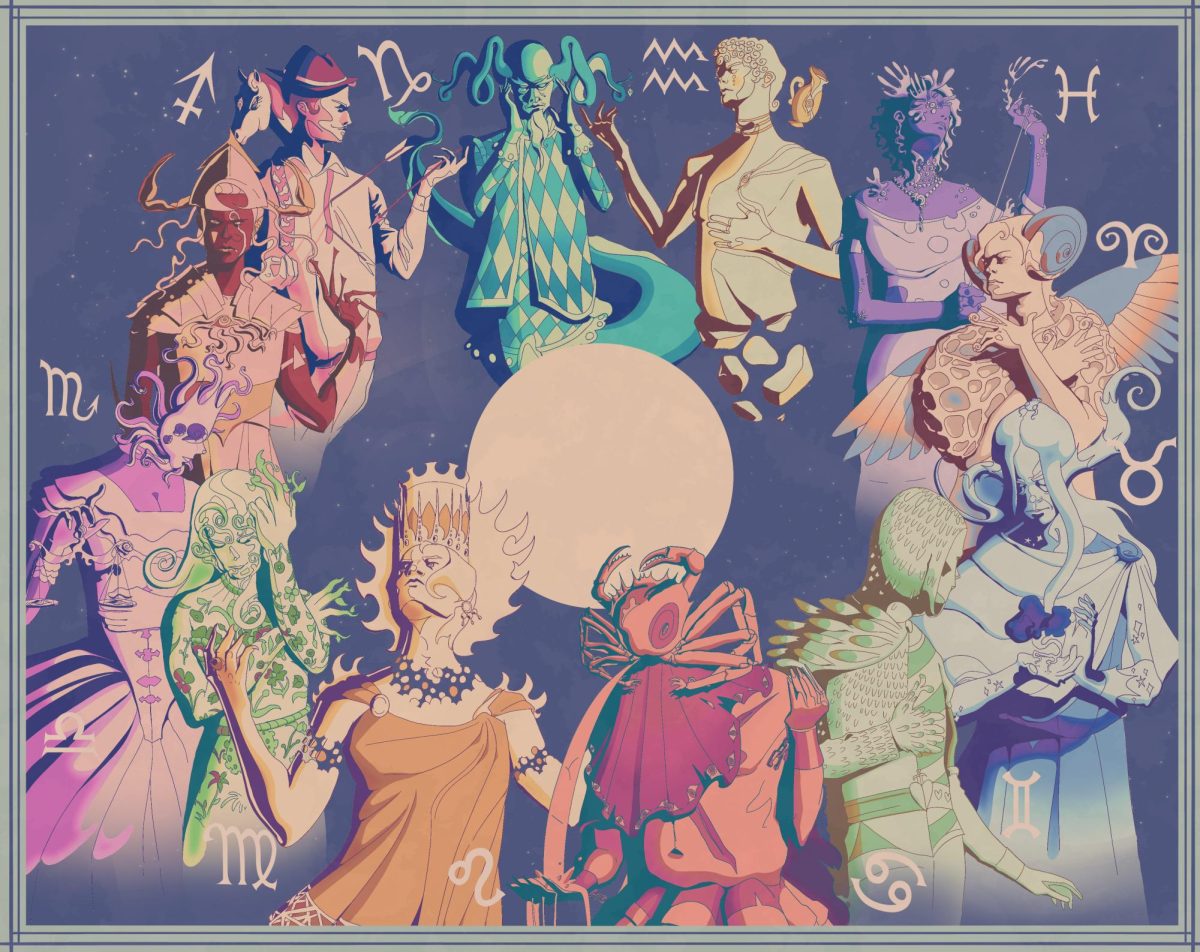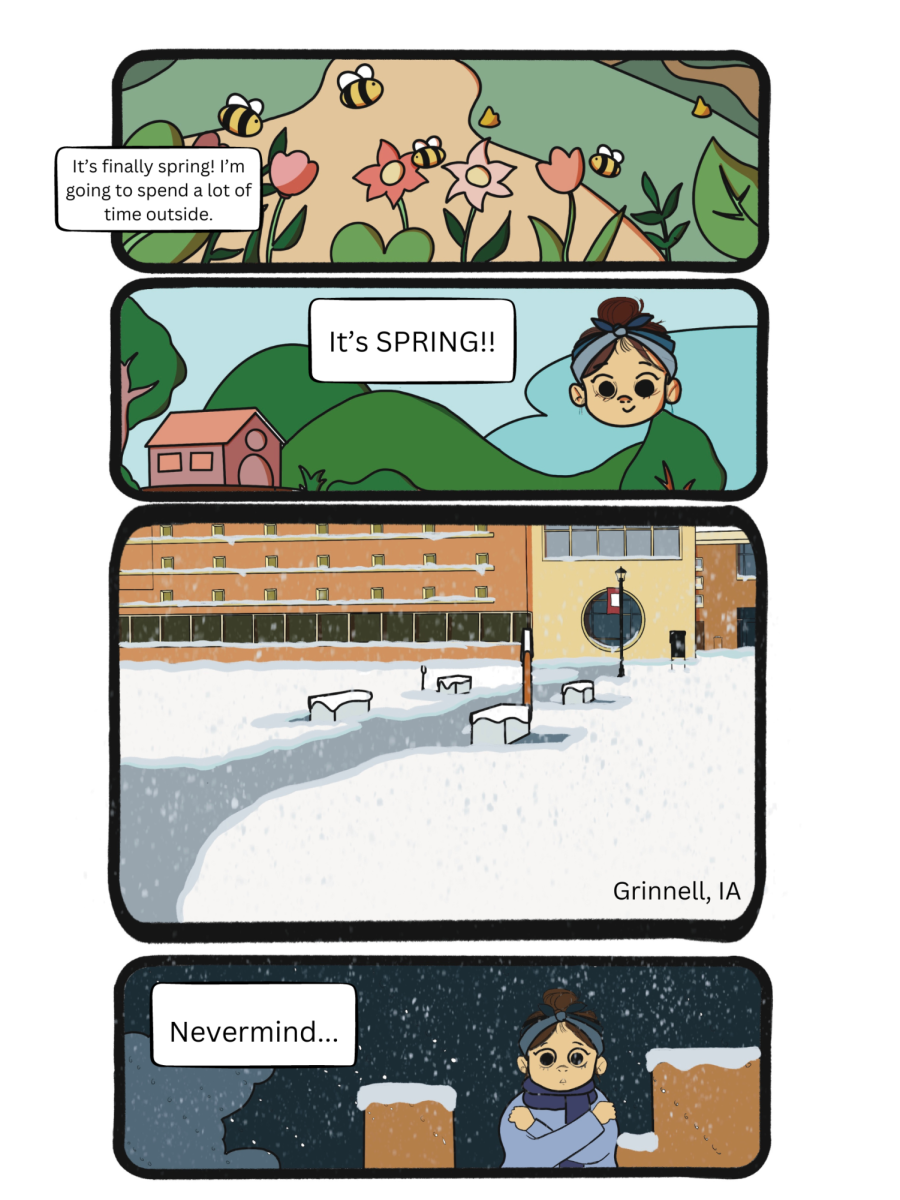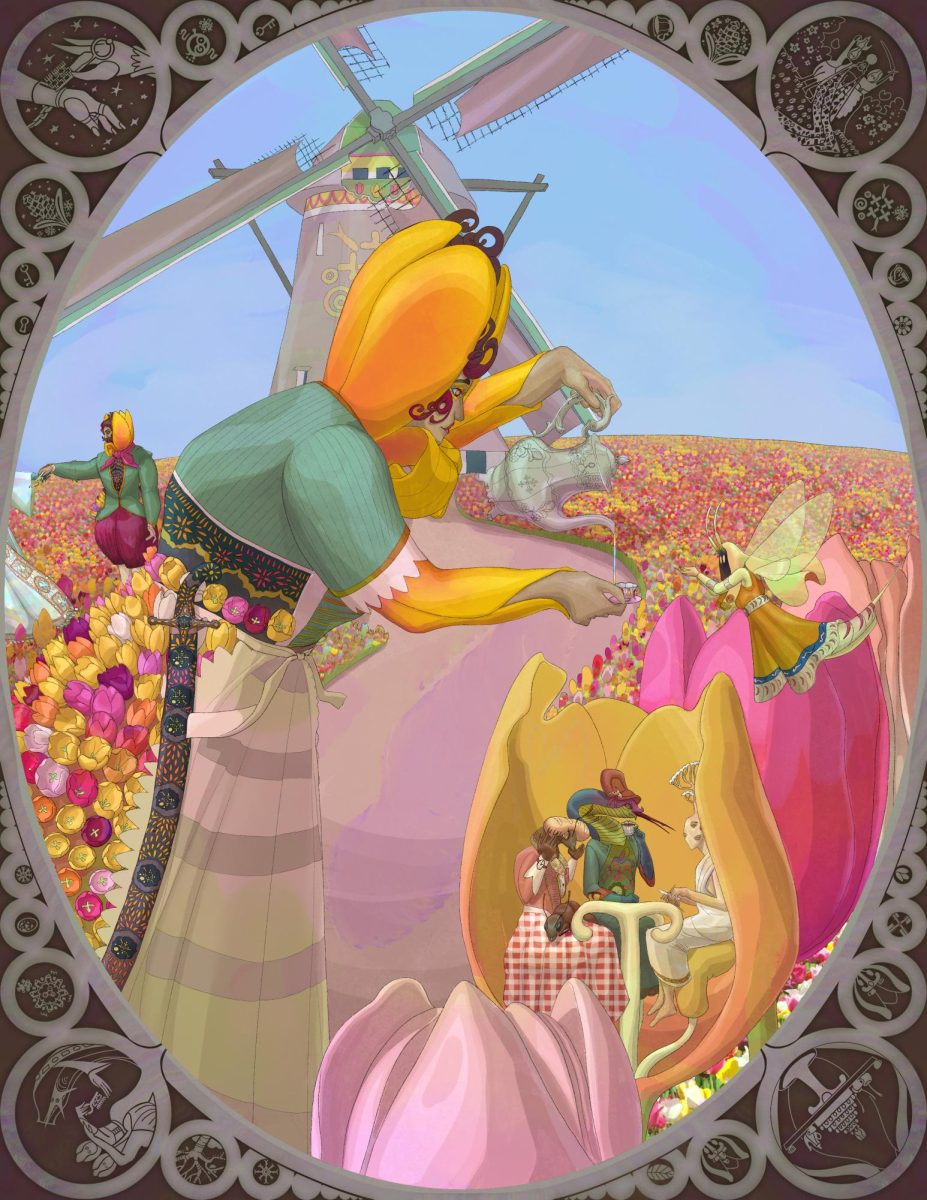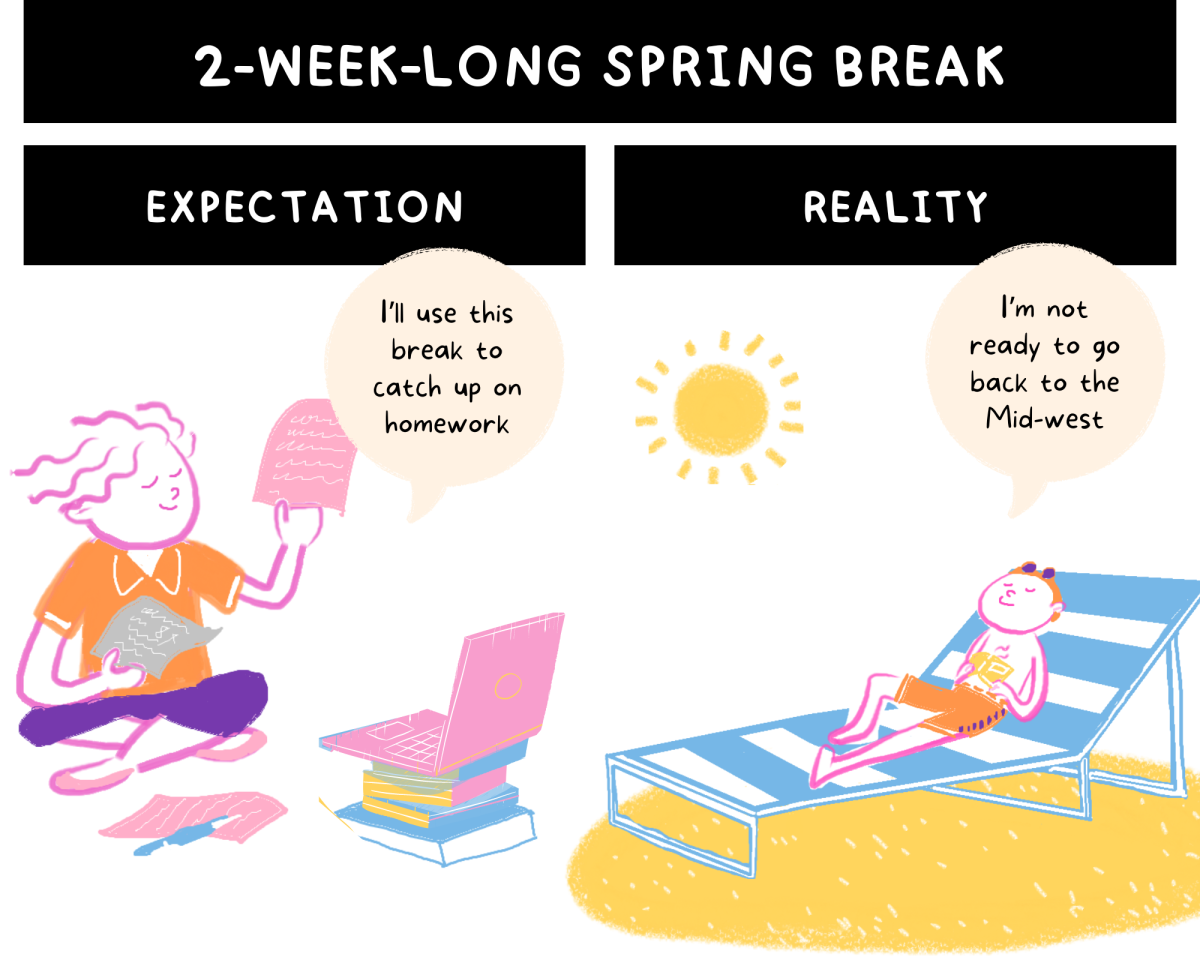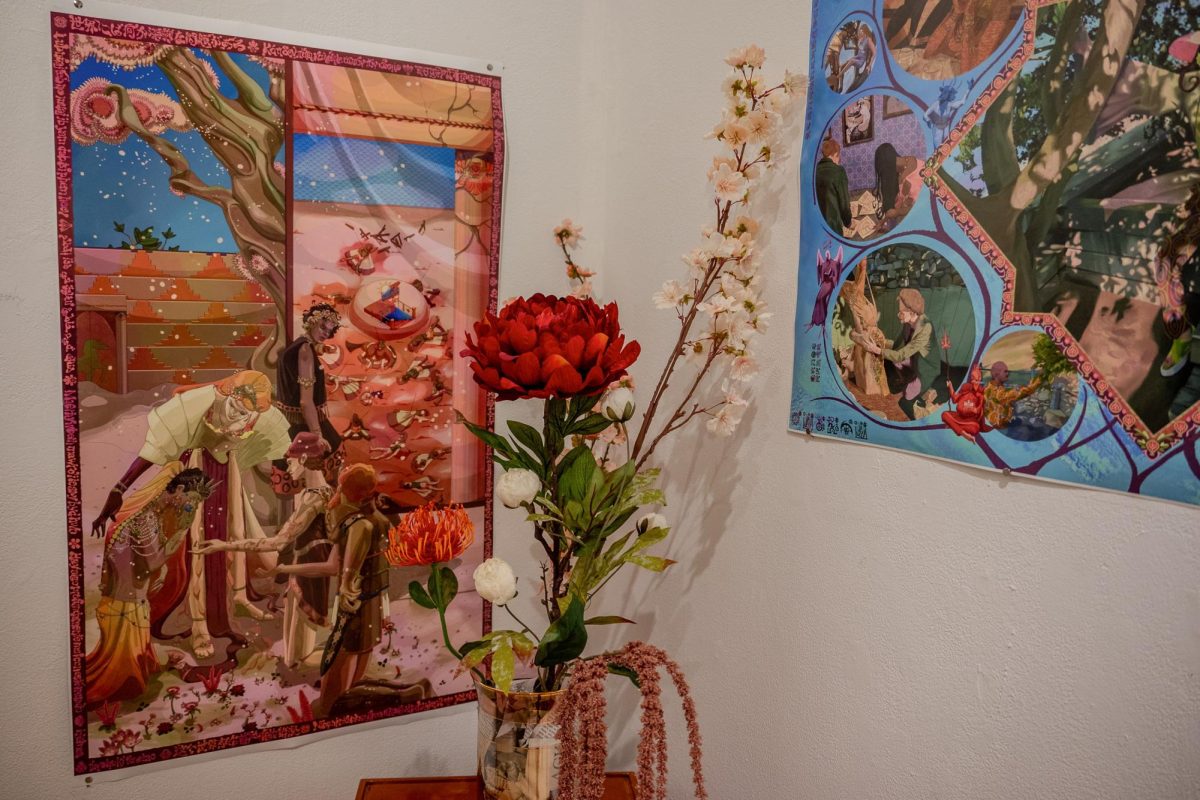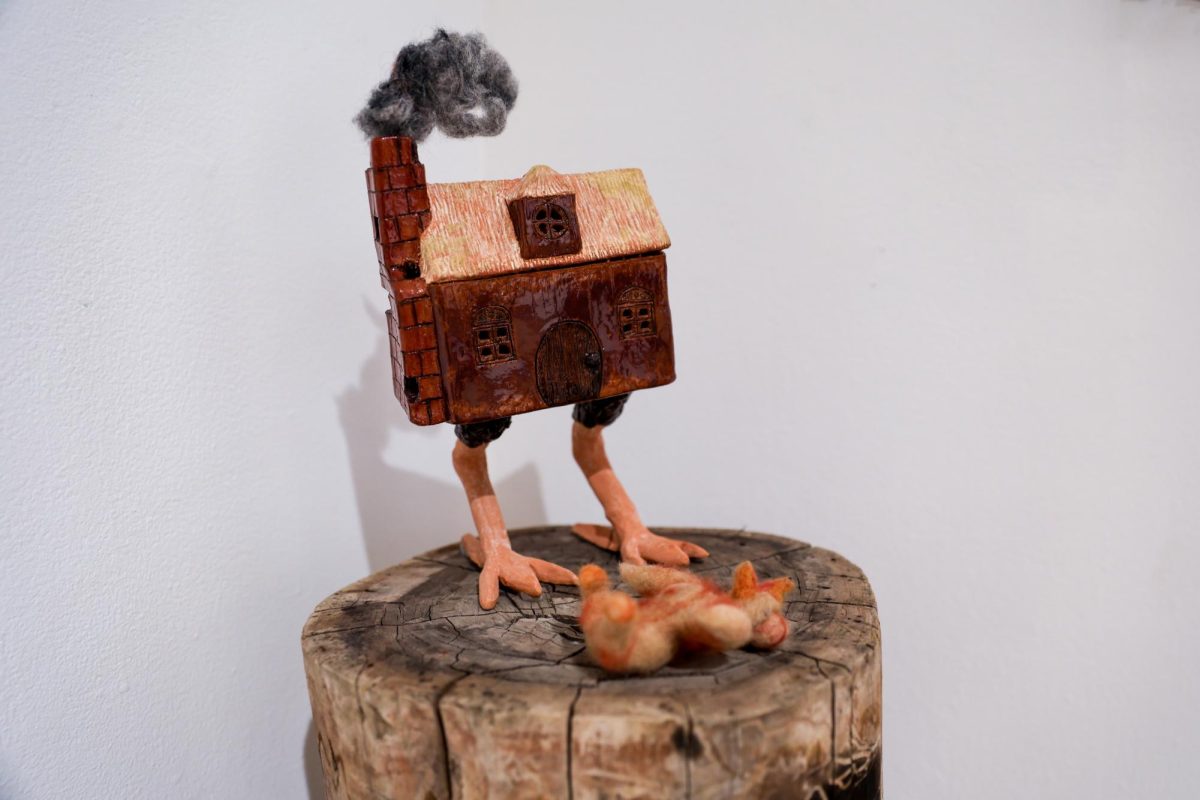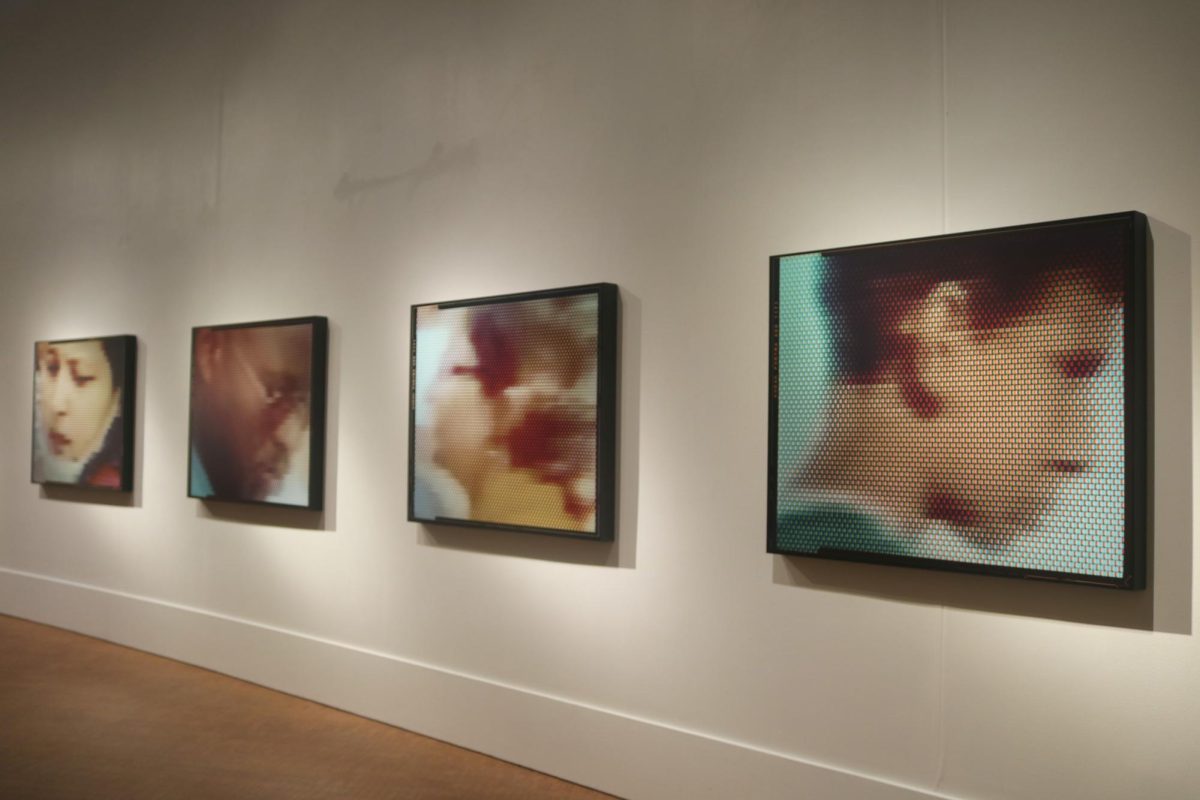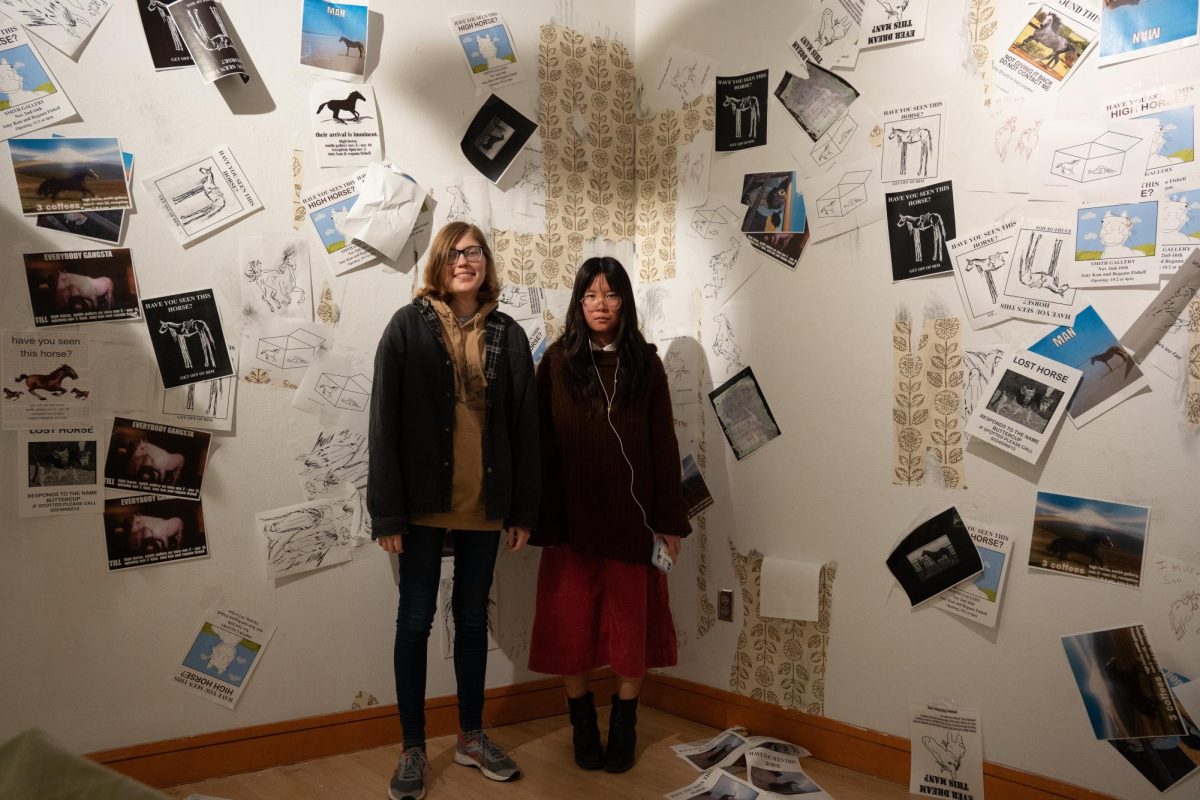From April 6 to April 18, the Edith Renfrow Smith `37 Gallery returned to nature. Bird calls echoed through a space overgrown with moss and leaves. Cinder blocks on the ground suggested vestiges of a humanity that once was. This is “Bird Worlds,” a Smith Gallery exhibition by Henry Loomis `26.
According to Loomis, the name “Bird Worlds” came from “thinking of spaces where humans don’t have as much control as they think that they do, or wherever they’ve let go of some control.” This underlying thesis statement dictated the direction of the exhibition. A short manifesto written by Loomis for an earlier version of a poster advertising the show states, “Perhaps we must accept — as those zen (sic) screen-painters did (do?) — that we live not in controllable forms but in BIRD WORLDS.”
The earliest piece in the exhibition is “Visions of Jonah,” a digital artwork created in 2022 and inspired by Moby Dick, a print of which hangs on the wall alongside other prints of Loomis’ digital works. “It was sort of interesting seeing the through lines in my work, and how I could sort of draw things together, even though it was over a long period of time,” said Loomis. “Most of it wasn’t really made with this sort of setting in mind.”
A studio art and Japanese double major, some of Loomis’ works feature influences from Japanese culture. “I am inspired by some of their aesthetic principles, as many artists are,” said Loomis. According to Loomis, one of the central parts of the exhibition is “Shikinen Sengū,” a video installation created for the exhibition and inspired by his time abroad in Japan in the fall 2024 semester.
“That one was the only one I made knowing specifically that I was going to have this show,” said Loomis. “This was made with the show in mind.”
Another prominent part of the exhibition are leaves from a sacred camphor tree at the Atsuta Jingū, a Shinto shrine in Nagoya, Japan, representing the other main theme of the show — sacred spaces and “how nature and our ideas of sacred spaces play off of each other,” according to Loomis.
“Bank Quilt,” a quilt with panels of paintings on the fabric, is an artwork that reflects this theme. The quilt depicts “these spaces which have the influence of nature upon them in really powerful ways, some of which are decaying from the inside out,” said Loomis.
Henry Loomis is a Graphic Designer at the S&B. He was not involved in the writing or editing of this story.


























